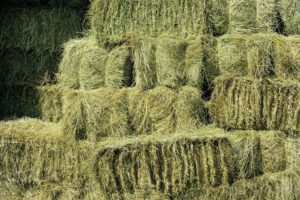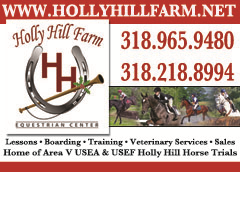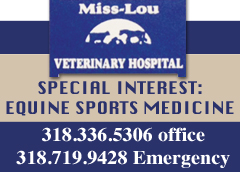By Sharon Choney, Cargill Equine Consultant.
As winter approaches and pasture sources are no longer available, the selection and purchase of hay or other roughage sources becomes an important decision for horse owners. Owners that have horses on confinement face the same decision all year. The quality and nutrient content of the hay or roughage source is critical because it is the foundation of the horse’s diet and provides 50%- 90% of the total nutrient intake for many horses. There are several visual factors that can be used in evaluation of hay, but the best evaluation will include both visual and physical inspection and forage testing.
Key visual and physical inspection factors include fresh, clean smell and freedom from dust or mold. Hay that is moldy can create digestive disturbances such as colic. Mold spores and dustiness can contribute to respiratory problems such as heaves. This is more noticeable when horses are indoors, particularly if ventilation is not adequate. Visual inspection should also indicate that hay is free of weeds, dirt or other contamination. If alfalfa is being inspected, it must be free of blister beetles, a potentially toxic insect. The blister beetle is not commonly found in the northern part of the Midwest, but can be a problem with hay shipped from further south.
Physical inspection should include looking for a high leaf to stem ratio and fine texture. A higher percentage of digestible nutrients is contained in the leaf portion of both grass hay and legume hay. As the plants mature, the indigestible fiber portion in the stem increases, reducing the energy and nutrient content per pound.
Color is also a useful indicator of how the hay was harvested. A uniform green color indicates the hay was not bleached from exposure to sun and rain. If hay has been stored where direct sunlight can hit it, the end or outside of bales may be bleached, but the interior should be leafy and green. Round bales stored outside may be bleached on the outside, but hay found a few inches inside the bale should be high quality.
Forage testing is a valuable tool for determining the value of hay as well as providing information for selecting commercial feed and doing a complete diet evaluation. In forage testing, a representative sample is taken from several bales and sent to a laboratory to be analyzed for protein, fiber, calcium, phosphorus, copper, zinc and energy (TDN/Horse Digestible Energy). Samples should be taken with a hay probe, (a tool which has a tube with a cutting end for “drilling” into hay bales), then sent to a
forage laboratory. County Extension staff or the local feed dealer can assist with directions and the available laboratory.
If quality hay is not available, pelleted or cubed products containing roughage can be used with limited long-stem hay. This option can reduce the storage requirement and allow the purchase of a uniform quality product as needed.
In any case, the selection of a high quality forage or roughage that is clean, free from dust and mold, free from contamination, and is of known nutrient value is crucial to the well-being of horses.
More articles can be found at Nutrenaworld.com
Contact Sharon Choney:
direct: 760-625-9441
email: Sharon_choney@cargill.com
nutrenaworld.com prognutrition.com






